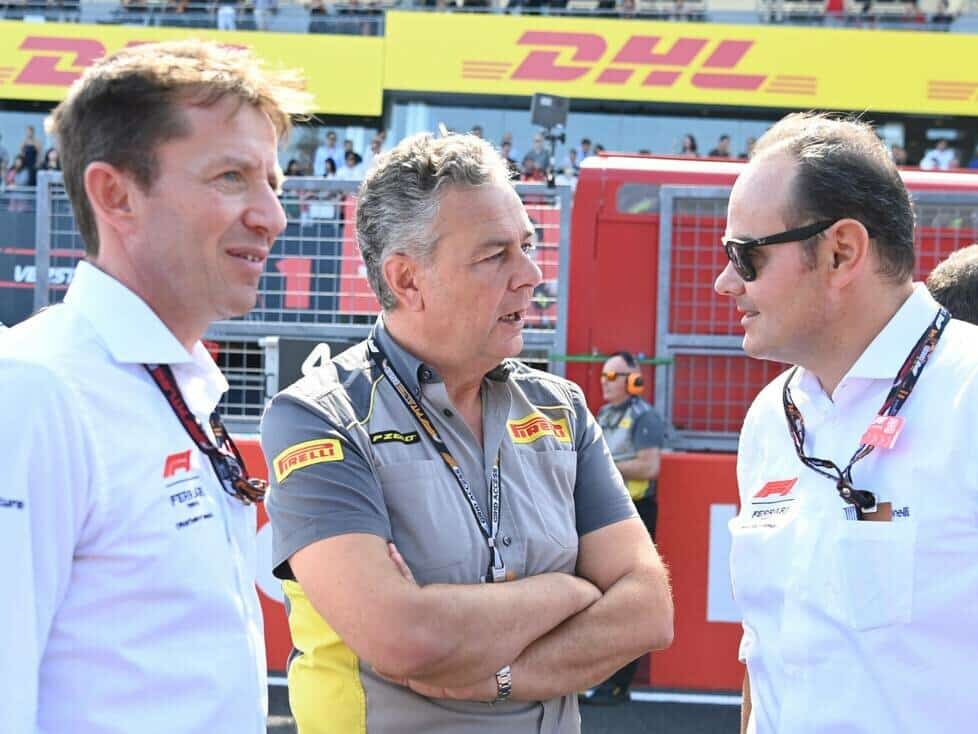What Pirelli sporting director Mario Isola has to say in retrospect about the Qatar tyre farce and what changes he proposes to prevent a repeat
Just hours before the 2023 Qatar Grand Prix, Pirelli had to announce: For safety reasons, a maximum of 18 laps per set of tyres may be run. The Formula 1 tyre farce at the Losail International Circuit had thus reached its climax. But could it have been prevented?
Pirelli sporting director Mario Isola says communication beforehand could have been improved. “There would need to be a system to inform stakeholders whenever there are changes to the track. That way it would be possible to see what it would mean for the respective parties.”
The Formula 1 drivers also have something like this in mind: they felt let down by those responsible because they partly learned about the last-minute changes from the press.
So who would Isola bring on board? “Not just Pirelli and Formula 1,” he says. “Because when you design a circuit you plan with different categories, like Formula 1 and MotoGP.”
“So why don’t we take the World Motorcycle Federation, Michelin [as MotoGP’s tyre supplier] and maybe a few more tyre manufacturers here, in addition to the track architects?” In such a constellation, “problems could be better anticipated”, says Isola.
He also points out that his company’s data is incomplete because Pirelli lacked crucial information during the preparation phase. Isola explains: “These cars are extremely hard on the tyres. The forces at [high] speed and the time on the kerbs are particularly decisive. All this has an impact on the integrity of the tyres. Because especially additional forces are difficult to simulate in the simulator.”
Pirelli did receive a simulation before the 2023 Qatar Grand Prix, he said, and used that data to work out the minimum pressure and maximum tyre camber. “But in the simulation the kerbs were missing. And when the kerbs are there in reality, it’s a completely different story,” says Isola.
Pirelli realises: 25 years ago there was something like this …
Nobody in Qatar was completely surprised, however. Isola says Pirelli had already “communicated with the FIA” in advance and pointed out potential difficulties. “There were similar problems two years ago,” says Isola.
And in a completely different environment, Pirelli says it had already encountered the kind of damage that now occurred in Formula 1 25 years ago. “A colleague told me that it was 25 years ago at a rally on gravel,” says Isola. But when asked at which event exactly that was, a Pirelli spokesman could only guess at “Greece or Cyprus”.
At that time, however, “similar problems” had occurred as now in Formula 1, due to “stones hitting the tyre sidewall”, Isola explained. “That’s why the same phenomenon occurred. I hadn’t remembered it at all. “
The FIA wants these kerbs, the FIA gets these kerbs
But even without this prior rally knowledge, Pirelli had “submitted reports” to the world governing body. “But we found out about the [new] kerbs quite late. By then it was too late to react,” says Isola. “And that’s what I mean when I talk about communication.”
At this point, track architect Hermann Tilke weighs in and backs up what Isola has already hinted at with statements to Sky: “We discussed this with the FIA for a long time. They really should have thought about it a bit more and maybe asked Pirelli. But it’s happened now.”
“What happened” is this: Tilke describes “kerbstone models” that were specially made “so that [the FIA staff] could touch them. The FIA then decided on this kerbstone, and then this kerbstone was installed.”
The result was damage to the Formula One race tyres, forcing Pirelli to take unusual measures such as imposing a maximum stint length. They simply “couldn’t risk anything” given the situation, says Isola. “That would not have been professional.”
All the more reason for Formula 1 and the FIA to prevent such scenarios in the future. “We should tackle this together with the track limits,” says Pirelli sports chief Isola. “The best thing would be to find a solution that solves both problems at once.” Isola did not say anything about what such a solution might look like.

